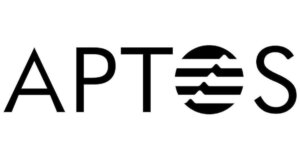Polkadot reveals future-proof scaling updates at sub0 developer conference
Asynchronous Backing to provide “flexible scheduling,” OpenZeppelin provides boost for ink! smart contracts and major ecosystem roadmap updates unveiled in Lisbon.

Lisbon, Portugal (September 21st, 2023) – Developers of Polkadot, the blockspace ecosystem for boundless innovation, will start testing a new process that will provide radical scaling solutions for the network within a matter of weeks.
The plans were unveiled at sub0, the Polkadot Developer Conference, by Sophia Gold, Engineering Lead at Parity Technologies, a leading contributor to Polkadot.

She said asynchronous backing would enable Polkadot to more than triple its number of validators by the end of 2024 to around 1,000, describing this as
“the most significant evolution of parachain consensus since we launched parachains almost two years ago.”
She added:
“What’s unique about backing in Polkadot is that it’s enshrined – it’s implemented natively on the protocol level and not on the smart contract level, which gives us capital efficiency and censorship resistance. Asynchronous backing enables flexible scheduling for our future scaling work through elastic scaling and instantaneous coretime. We have a credible roadmap to get Polkadot to support 1,000 parachains and 1m+ transactions per second. The design is there – we know how to scale Polkadot for the indefinite future.”
A release of asynchronous backing is due to be deployed to Polkadot’s Rococo testnet in about two weeks.
Habermeier expands blockspace narrative
Sophia Gold was followed on-stage by Polkadot cofounder Robert Habermeier, who unveiled new concepts and architectural components that would enable roadmap features first outlined at Polkadot Decoded in June.

These features, including those known as ‘agile coretime’ and ‘elastic scaling’, would enable more flexible and efficient use of Polkadot’s blockspace and computing power, better serving innovators at all stages of growth, and taking the network beyond the existing parachain model.
He outlined a proposal for a new process of submitting work to Polkadot that would enable the network to process a much wider range of activity than parachains alone, including the ability to deploy smart contracts directly to a Polkadot core.
He explained:
“This is how you would get to the point of cores being used by different parachains or bundled in all these different ways without having to enshrine that directly into Polkadot’s protocol. Rather, we make it possible through experimentation at higher levels.”
This new model would also enable a much anticipated feature known as atomic composability, enabling simultaneous execution of operations from multiple parachains at a time for more complex cross-chain transactions.
Accelerating smart contract delivery
The second day provided some important updates on the work carried out by OpenZeppelin on the OpenBrush contract library, intended to ease the development of Polkadot’s native ink! smart contracts. This includes the creation of easily implementable and extensible smart contract standards and translating Solidity contracts into ink!.
Felix Wegener, Security Services Manager of OpenZeppelin, said:
“We made suggestions on how to change design choices, tooling, upgradeability and macros, and moving forward we see great promise in the ongoing developments of the Polkadot ecosystem.”

João Santos, Project Manager of OpenZeppelin, said his team had proposed open-source parachain runtimes and underlying FRAME pallets to accelerate the development and deployment of new and secure parachains.
He added:
“We believe the initial step here is a generic runtime to allow projects to have a common base and start building immediately. Then we can start taking the learning we had developing this runtime, take the community feedback and then think about what’s next.”
New Ledger app coming
Juan Leni, CEO of Zondax, a major software developer for the Ledger hardware wallet, explained how his team is developing a new Ledger app for Polkadot that depends on verifiable metadata. He said:
“I haven’t seen anything similar in other ecosystems. It will feature very minimal updates to the runtimes and to the wallets, we started research and development back in June.”
The single Ledger app can support any parachain in the Polkadot ecosystem, a boost for user experience of cold wallets on Polkadot, as previously, a separate app was required for each network. The app will feature clear signing of all transactions for maximum security.
His colleague Fernando Theirs said:
“The integration for new parachains should be super simple. If you respect the metadata protocol it should be almost out of the box.”
Attendees also heard how Snowbridge, an Ethereum bridge to be built on the Polkadot Bridge Hub, is in position to deploy on the protocol’s canary network before the end of the year.
The plan is for each parachain to have its own dedicated messaging channel to Ethereum, unlocking a high degree of flexibility. Snowbridge is a trustless, decentralized mechanism for linking the Ethereum and Polkadot ecosystems, and is designed for general purpose.
About Polkadot:
Polkadot is the blockspace ecosystem for boundless innovation. It enables Web3’s biggest innovators to get their ideas to market fast, with flexible costs and token options. By making blockchain technology secure, composable, flexible, efficient, and cost-effective, Polkadot is powering the movement for a better web.
- Media contact: [email protected]



 CoinGlass
CoinGlass 


 Farside Investors
Farside Investors 
















































































